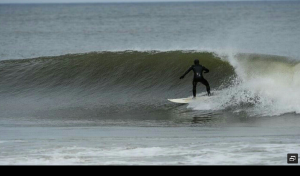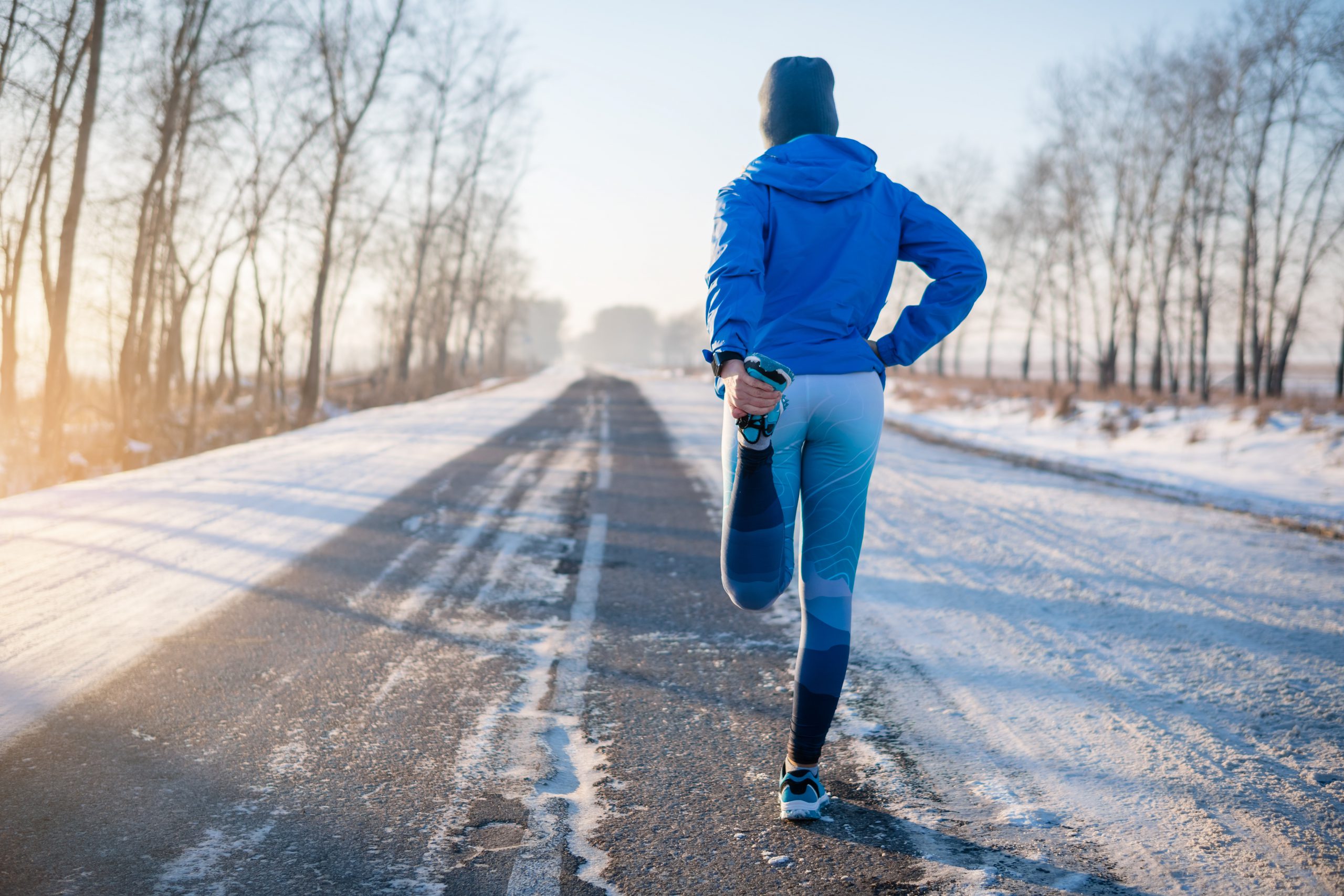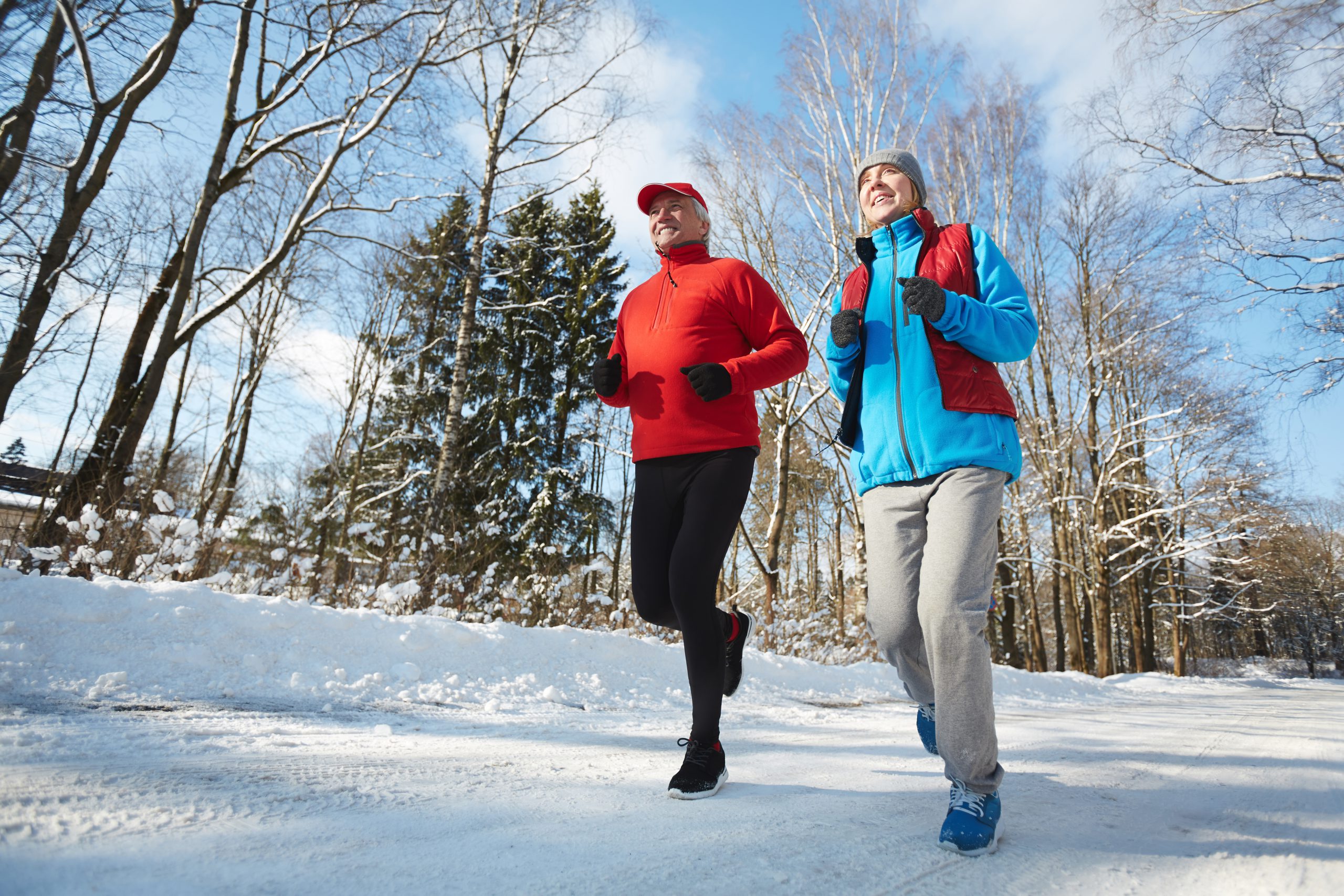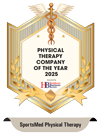Whether you’re hitting the slopes for a ski weekend or just heading outside for a run, exercising in cold weather presents a unique set of challenges. It takes the body longer to “warm up” (literally and figuratively) in cold weather, particularly the muscles and lungs. Additionally, while you may not feel like you’re sweating as much as when it’s hot and humid, perspiration and hydration should definitelybe a concern. Not to mention it’s essential to make sure you have the appropriate gear. (Hello, icy patches!)
We discussed how to exercise safely in cold weather with Dalton Gilligan, PT, DPT and Clinic Director of SportsMed Physical Therapy Newark. Dalton is a lifelong athlete with years of experience facing the elements to exercise outdoors. Before you head out to enjoy outdoor winter activities, check out Dalton’s tips below.

What temperature and wind chill is simply too cold to exercise outdoors safely?
“As a person who made the ocean my second home, having spent the majority of my 20’s surfing through the winters in New Jersey, challenging snowy beaches during Nor-easters off Long Island, and vacationing to the balmy waters of Portland, Maine in February, I can personally attest that there is no firm cutoff temperature for winter exercising when adequately protected. Safety and tolerance will be variable from person to person. Preparation, listening to your body, gear, and hydration are all key.
From my experience I can tell you appropriate gear is everything, and so is common sense. When I first started, I was not a reasonable human. One session, I spent 8 hours sitting in the Atlantic ocean during a snowstorm, then the next 8 hours eating chili while trying to warm up, painfully bringing feeling back into my hands, toes, and face.
After that experience, I developed a rule for winter surfing. If I wipe out on three waves I should have made, it is time to end my session and get warm. I did this because the signs of hypothermia are more than just shivering and numbness. They include fatigue, confusion, slowed heart rate, numbness, blue skin, and slowed breathing. While performing any sport in cold weather, it is important to pay attention to the quality of your performance because declining ability may be a sign of hypothermia or dehydration.

Proper hydration before, after, and during the sport is absolutely paramount. I can attest to feeling less thirsty exercising in the cold, but this does not mean your body needs less water. In fact, you need more water since you are losing a lot of volume with sweating and through the dry cool air. Blood flow in your body changes when you are in extreme temperatures, acting as both a warming and cooling mechanism pending temperature. If you are dehydrated, this natural warming system doesn’t work as well, and the dangers associated with hypothermia will come faster.
Other risk factors for exercising in the cold include bronchospasms – so take special note if you are asthmatic as cold can trigger your airways to narrow. Another potential risk, while not fully researched or understood, is Bell’s palsy, or paralysis of one side of your face due to involvement of the facial nerve. Often people develop this after sitting next to a cold air conditioning unit which could be similar to windchill. There is thought it may trigger an underlying cold-sore-like virus injuring the nerve.
Numbness of your fingers and toes is an early sign of hypothermia, and something to watch out for and take care of afterwards as well. Trying to get warm can be painful, and it is best to do so slowly.”

What issues come with specific sports?
“Hypothermia, asthma issues, Raynaud’ syndromes, dehydration, and potentially Bell’s palsy, are risks regardless of sport. It is important to be mindful of what you are doing, consider the gear and best ways to protect yourself.
Specifically for hand warmth and Raynaud’s, it can be helpful to wear a sweat-wicking thin material under gloves or mittens. When skiing and snowboarding, wear waterproof clothing, goggles, a facemask, and preferably a longer coat especially for boarding because a lot of time is spent sitting in the snow and you can easily become saturated.
While surfing in frigid temperatures I wear a 5-millimeter wetsuit; I know it’s always the warmer choice to wear mittens over gloves and to avoid boots where the big toe is separate from the rest (despite a slight loss of performance) because your digits are warmer next to each other than when separated. Toes and fingers usually go numb quickly, and this prolongs that time. In the fall and spring, I wear a slightly less thick wetsuit 3 to 4 millimeters to minimize sweating and dehydration issues (yes, you can sweat in the water!).
For any sport where you are moving quickly and the apparent wind is an issue, it’s important to have a windbreaker-like coat as your outermost layer. For example, in kitesurfing it’s important to wear a drysuit rather than a wetsuit to better protect from windchill, letting water wick off rather than saturate (opposed to a wetsuit which saturates and warms).”

Any tips about removing layers if/when you start to sweat?
“Know your gear, what you plan on doing, and where you can go for warmth. Layers are great because they give you wardrobe flexibility. Always carry extra socks in case your feet get wet. Avoid wearing cotton as a first layer because this will make you sweat and then absorb into your clothing, which you will be stuck sitting in. If you know you are going to be actively snowshoeing, cross country skiing, where there is a high potential for sweating, you will want to wear slightly less than if you are doing a more leisurely activity such as walking or snow tubing.”
It’s important to hydrate, but how much and when?
“Hydration is one of the most important things you can do. When I surf in the winter (which is less frequent now than it used to be), I hydrate the day before and that morning. Not only is hydration important for fluid regulation and warmth, but there is also some limited evidence that it might decrease injury risk and tissue flexibility. The amount is going to vary from person to person based on a variety of factors. The more you sweat and the longer you exercise, the more water you should drink. Aim to ingest about 16 ounces/hour as an estimate. Afterwards, definitely consider replenishing electrolytes.”
– – –
Thanks to Dalton for sharing his expertise! If you found this article helpful, please feel free to share it with someone who loves to spend time outside in the winter.





